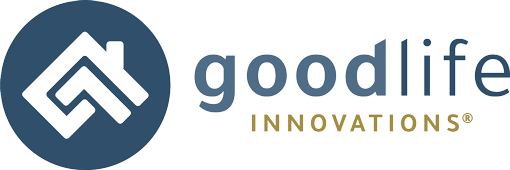It’s hard to be prepared for a crisis that we never saw coming. We are heartbroken for the service providers across the nation who are experiencing the quick spread of COVID-19 cases within their walls. From what we’ve learned, the pandemic can exhaust all of the extra capacity agencies think they have, from direct support professionals (DSP) to the C-level executives. In addition, providers continue to face delays in funding and widening gaps between medical waiver reimbursements and the cost of care. In the midst of this pandemic, a different crisis is emerging—a workforce crisis unlike anything our industry has experienced before.
Thankfully, as a home and community-based service (HCBS) provider, so far GoodLife’s residents remain free of COVID-19. We attribute this in part to our unique staffing strategies in neighborhoods or private homes instead of in large institutions. We know that as the number of different people involved in care goes down, care quality goes up. That’s why in our neighborhood homes we staff using front/back teams on flexible schedules, which also allow ample time for rest and recuperation. In the midst of the coronavirus, these strategies are a tremendous asset.
“When we believe someone on our staff has been exposed to the virus, our strict protocols keep those individuals out of our neighborhoods,” says Megan Todd, GoodLife’s Director of Strategy and Development. “This is because we know that preventative measures are key to limiting the spread of coronavirus. This could be a tremendous burden on our staff and managers, but the innovative schedule strategies and workforce solutions we use add to overall capacity and enable us to draw on our reserves with minimal burden—a key to stability in a time of crisis.”
Increasing needs require established stability
States across the country are struggling to find necessary financial help in the midst of COVID-19, and people with disabilities are often last in line for funding. According to the American Network of Community Options and Resources’ (ANCOR) statewide report, a Minnesota Day Service provider closed its doors as others struggle to stay open, and the Division of Disability and Rehabilitation Services of Indiana announced a 15% budget cut to take effect on August 14th.
We don’t yet know the impact the coronavirus is going to have on agencies long term, but we do know the need will increase as waiting lists for intellectual and developmental disabilities (I/DD) and aging services continue to rise.
“More than 50% of individuals with I/DD are cared for by a family member instead of a service provider, in some cases due to the lack of quality alternatives,” shares Megan. “But 67% of those family caregivers are also baby boomers. They will age into needing care along with all of the other baby boomers who aren’t caring for those with I/DD. And frankly, the care industry is not prepared for this. We need to be able to do more with the resources that we have. If we go into rapid growth mode without established stability, it will cause more harm than good to the quality of care.”
Leveraging more from our workforce
While we didn’t see COVID-19 coming, GoodLife is grateful for the stability it feels despite the unstable times. As a provider ourselves and an innovator in non-traditional service models and approaches, we are positioned to help other provider agencies reimagine their approach to labor and direct support staffing models. They, too, can save money across the agency, have lower turnover, provide higher quality care, and pay staff more in a time when finances are critical.
In our two-hour Workforce 101 workshop, GoodLife president and CEO Mike Strouse outlines the causes of workforce instability that we all face: high and rising labor costs, low unemployment, a dwindling direct care workforce, increases in both minimum wage and insurance costs, and the decline of funding per person for services despite the growth in need and expense. He also shares practical and innovative strategies to address these challenges and ways to leverage more from a workforce that provides greater capacity for agencies and provides more shifts and higher pay for staff.
After the workshop, GoodLife consultants can provide a cost-proposal analysis. Our experienced team creates a schedule strategy based on an individual agency’s current baseline data to show how much money they can save and capacity they can gain without costing overtime. Once the analysis is complete, our team is available to guide agencies through implementation of the cost-saving (and capacity building) strategies.
“Understandably, agencies are concerned about their stability during times of crisis,” Megan explains. “There’s money on the table, usually within the means of existing Medicaid waivers. With just a little bit of innovation, we can help agencies increase capacity, stability, and wages with funding they already have.”
Partnering to provide better care for vulnerable populations
The current reality is that HCBS providers are on the brink of survival. If they don’t make it through this pandemic and season of increasing need, there will be a massive impact on our most vulnerable populations. Alternatives for care are institutions, congregate care, nursing facilities, and group homes, which we know have a much higher fatality rate when it comes to COVID-19.
Every day we’re working on innovative workforce and labor strategies to help HCBS providers build a sustainable framework that ultimately leads to improved care for seniors and individuals with I/DD. We hope you’ll partner with us to discover how our labor strategies can improve your organization’s margins. Together, we can find stability in the current crisis as well as the ones that may be on the horizon.
Learn more about our Workforce 101 solutions and reach out to Megan Todd to schedule your free 2-hour workshop.


